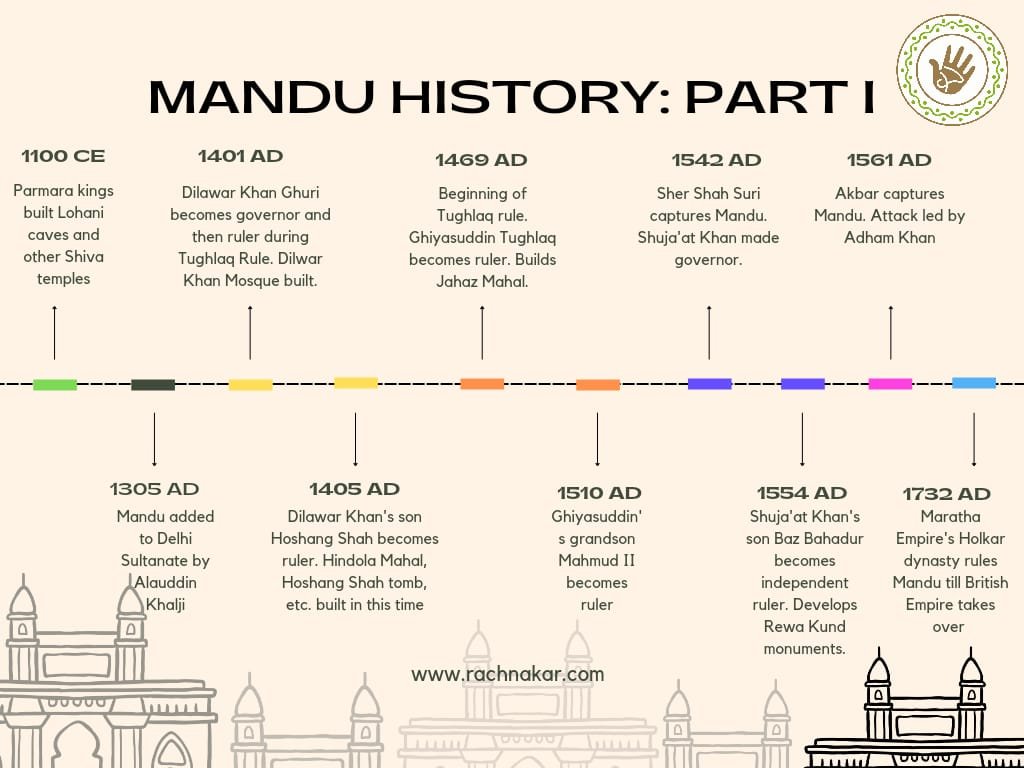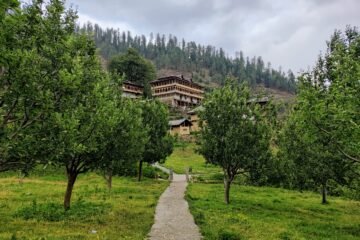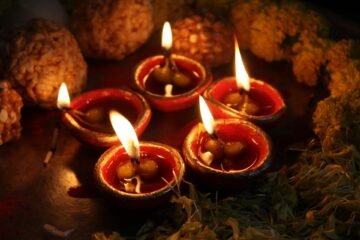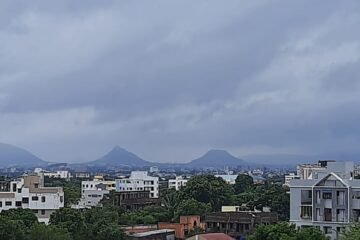Mandu: India's Monsoon Retreat
There are perhaps no places in India which can match the beauty of Mandu during the monsoon season. And this is not me speaking, but the Mughal emperor Jehangir, who sang praises of this small town in Madhya Pradesh when he first visited it.
And indeed the historic emperor was correct. Even now, centuries later, nothing celebrates the onset of monsoon rains like Mandu. The glistening streams start flowing, the trees and grass starts glowing and moss decorates the ancient rocks and for a span of 2-3 months, brings them back to life.
Table of Contents
The History of Mandu
Being in the centre of India, Mandu has a tumultuous past, having come under the reigns of a number of dynasties and empires like the Parmaras, the Chahmanas, the Khaljis, the Ghuris, the Tughlaqs, the Mughals, the Sur empire, the Marathas and finally, the British.
In this article, we will cover monuments from the Paramara time, the Lohani caves, and then the Royal enclave which was built in series by the Ghuris and the Tughlaqs, and modified and renovated by the Mughals.
Here is a brief timeline of Mandu’s history with context to this article.

Lohani Caves
One of the most fascinating monuments you will find in Mandu is the Lohani cave. Coming under the bracket of ancient monuments of Mandu, this was a Hindu monastery and temple complex built by the Parmar empire somewhere between 11th and 12th CE.
The surroundings of the caves are beautiful, especially in the monsoon when there is lush greenery along the sloped of the hills and a picturesque stream flowing just on the side of the entrance of the caves.
However, the USP of the caves for me is just the thrill of seeing something created by our ancestors a thousand years before. To enter the caves and think of where people slept, how they must have looked outside the carved-out window and watched the water flow down the stream and felt a moment of serenity is an amazing experience by itself.
The Royal Enclave
Jahaz Mahal
Jahaz Mahal is one of the monuments which define Mandu. Built by Sultan Ghiyaz-ud-din Khalji, this was an assembly hall and pleasure palace. It is called Jahaz Mahal because it is built on a narrow piece of land between the two reservoirs of Munj Talab and Kapur Talab.
The word people often use to describe is ‘Romantic’, but I would define it as ‘Airy’. The ground floor has three halls and extended open rooms which hang over the Munj talab. Because of this location, these rooms have a breathtaking sense of airiness and peace within them. One can sit here for ages and absorb the beauty around them.
The roof of the Jahaz Mahal has open canopies which give one a breathtaking view of the two reservoirs, Jal Mahal and the entire Royal Enclave.
Hindola Mahal
Like Jahaz Mahal is defined by airiness, Hindola Mahal is defined by uniqueness. This assembly hall is a rare form of architecture where the main walls of the palace are slanting, giving the structure its name Hindola, meaning swinging.
Another thing you will notice about Hindola Mahal is the difference in its external architecture in its two parts. This is a T-shaped monument, and the architecture of the top bar of the ‘T’ is different and more evolved than the rest of the body. While most of the monument has a plain exterior and arches reminiscent of early Malwan architecture, the extended part has external features like a jharoka.
Why the difference?
This is because the early structure of Hindola mahal was built by the Khalji dynasty, and is part of an emerging style of architecture. In fact, the rooftop of structure has collapsed due to lacunae in the emerging techniques. The latter portion was built by Mughals centuries later and uses far more sophisticated architectural features..
Nevertheless, the interior of the hall lends validity to the phrase, ‘In simplicity lies beauty‘. The view of arches cascading through the hallway is simply amazing.
Kapur Talab
Kapur Talab is one of the scenic artificial reservoirs flanking the sides of the Jahaz Mahal. It is connected by an underground channel to the Munj Talab on the other side of the Jahaz Mahal.
It has a masonry wall all around it, and the brickwork serves a beautiful contrast to the placid water. There was also a central pavilion or canopy, which is now in ruins.
Gadashah House
Rarely have I come across a monument with a name as interesting as Gadashah House. ‘Gada‘ means beggar and ‘Shah’ means master. This term essentially refers to a person who was a worker for the sultan and eventually became a person of importance. As per historical records, this could refer to Medini Ray, a Rajput chief who served the Sultan Mahmud II before gaining a post of eminence himself.
This two-storied structure has an interesting feature which sets it apart from the surrounding monuments. Excess water from the central central fountain travels through a network of channels and feeds two animal spouts – a lion and a fish. These two animal spouts are a Hindu architectural feature- a unique feature in the Royal Enclave.
Taveli Bhawan
Taveli Bhawan is the first monument you come across when you enter the Royal Enclave. This position is no coincidence. Taveli means tabela or stable. In olden times, this elegant building was a horse stable and also a station for palace guards to keep an eye on the Royal Enclave.
In current times, Taveli bhawan has a museum on the ground floor.
Jal Mahal
Jal Mahal is like an island in the middle of Munj Talab. Having served its purpose as a monsoon retreat during its time, its location in the midst of water makes it both mysterious and scenic.
The entrance of the Jal Mahal spells water all around- be it the staircases which reach down to Munj talab, or the fountains and tanks in front of this double-storied building. But on a closer inspection, there seems to be a floral theme to the structure, be it the shape of its tank, its fountain or its beautiful windows!
In fact, the windows captured my interest, because they look circular from outside, but if you go inside the mahal, the internal architecture gives one a floral peek of sunlight.
Palace Ruins
Interesting as all monuments of Mandu are, perhaps the most beautiful structures for me in Mandu were the palace ruins. This is because monsoon rain, which makes the moss clothe the entire stonework of the ruins. The bright moss contrasts beautifully against dark stones and bring them, quite literally, back to life.
The central place for the royal family, as you walk through the ruins you will see rooms where they lived, the hammam where they bathed and the baoli whose water they drank.
Champa Baoli
Within the palace ruins is the Champa baoli, recognisable by the delicate fencing around the circular baoli. This baoli is named so, because it was said that its water tasted as sweet as the smell as Champa flowers.
Interestingly, there is an underground vault of rooms, the tehkhana, around this baoli. The rooms are at the levels of the nearby Munj and Kapur talab and this placement keeps them cools enough throughout the year to serve as the ancient resting place for people during summer time.
Hammam
Mandu’s hammam is built as a central bathing area with two channels for hot and cold water, and two changing rooms at the back. But all three rooms have a very special feature- their roof. The roofs have been cut with star-shaped holes so that one can bathe under literal starlight!
Dilawar Khan Mosque
Located adjacent to the palace ruins, this place of worship is a former temple which was converted to a mosque for the royal family. It is the first Islamic building of Malwa region, a fact evident from the Hindu features in its architecture.
The structure of the mosque is of a central courtyard with surrounding pillared corridors. The symmetry of the pillars in the corridors is a picturesque sight indeed.
Nahar Jharoka
On the sourthern side of the Dilawar Khan mosque is the Nahar Jharoka. This is a later addition to the royal complex built by Jehangir when he visited Mandu.
Nahar jharoka is essentially a balcony which the Mughal rulers used to present themselves to their public. It was held up by a lion effigy, now in ruins, and is hence called nahar.
The balcony is surrounded by fountains and corridors from where the public could hear the emperor.
Animals of Royal Enclave
The royal enclave is a very peaceful place if you visit on a weekday. An perhaps this peace lends the grounds one of its most unique features- how comfortable the animals here are with humans. In front of Kapur talab, you will find beautiful birds perched on the railing calmly getting photographed. In the palace ruins and gardens, the squirrels are so friendly that they actually run after you. The langurs and dogs in Jahaz Mahal sit peacefully alongside tourists. And cows graze calmly, synchronising movements with the metallic ring of the bells tied around their necks.
People come and go, but the ancient monuments of Mandu will live on forever. Perhaps the animals know this, and protected by the magic of Mandu, rest in its faith.
Due to paucity of time, we missed out on a few monuments here, which are Gadashah’s shop, Hathipol gate, Andheri and Ujala baoli. Be sure to check them out if you visit Mandu.
We did cover a lot more monuments though! Coming up next- Mandu Village and Darya Khan monuments!


